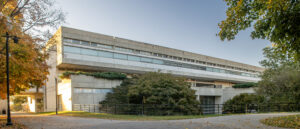
About the College
At a Glance

We are a college of diverse people dedicated to the power of design. We pursue a culture of joy, cultivate an inspiring place, and continually evolve our structure.
Discover Our Vision of Greatness

Founded in 1965, our college has undergone periods of diverse leadership and expanded significantly over the years.
Explore Our History

As one of the college’s strategic priorities, we are making a meaningful difference in accessibility for students while establishing a strong sense of belonging for all.
Read About Access & Engagement
Meet Our Community

Faculty and Staff Directory
The College of Architecture and Design is home to more than 100 faculty and staff.
Meet Our Team

Advocacy Boards
Our college and schools are guided by alumni and industry professionals dedicated to our vision and mission.
Meet Our Boards
Come See Us

Plan a Visit
See for yourself what makes the College of Architecture and Design at the University of Tennessee, Knoxville, so special.
Visit

Our Spaces
From our award-winning Art + Architecture Building to our Fab Lab located downtown, find out why we love it here.
Spaces & Resources

Explore Knoxville
Discover Knoxville, a city that boasts a diverse mix of tasty food, historical landmarks, and plenty of outdoor adventures.
Discovering Knoxville
Start Your Career Here
We want you to join our diverse community, made up of individuals with a shared commitment to creativity, learning, and engagement.
More About the College
Accreditation
All of our degree programs are fully accredited, ensuring you receive a high-quality education that meets rigorous academic and professional standards.
Annual Report
A visual publication of our college’s successes, challenges, and strategies for furthering the success of our college.